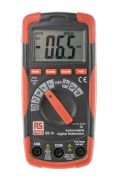A Complete Guide to Car Fuses
This guide explains what car fuses are and explores the different types and sizes available.

What is a Car Fuse?
Car fuses are components designed to protect electrical wiring in cars and vehicles. They offer protection against overcurrent and short-circuiting, disconnecting the circuit if they detect a potentially dangerous level of current. They are also commonly known as automotive fuses. Various types and sizes are available, each best suited to different applications and electrical equipment within a vehicle.
Most modern car fuses are blade-type fuses. This means that they share a similar design, characterised by a coloured plastic body and two prongs that slot into the socket. They can be mounted in fuse blocks, fuse clips, or fuse holders, depending on the application.
How to Check Car Fuses
Car fuses are single-use and typically should not need replacing unless they have blown. As a result, regular maintenance is not usually required, and, in most cases, a simple visual check will be sufficient to determine that the fuse is still in good working order. With a broken or blown fuse, the wire will be disconnected, and it will generally be easy to see that the continuous connection has broken or melted.
In situations where a visual inspection is not easy to carry out or further confirmation is necessary, you can use a multimeter to check the status of the fuse. This can be done in one of two ways:
Using the multimeter in continuity mode, simply attach the probes on either end of the fuse. This allows the device to conduct an electrical test and determine whether there is continuity throughout the fuse. If the multimeter displays a large resistance or signals an error message (depending on the specific type of multimeter), then the fuse is not connected and has most likely blown.
The second method is to use the ohmmeter setting of the multimeter to check the resistance of the fuse. Note that you should remove the fuse from the fuse box or housing before taking this measurement. Again, place the probes on each end of the fuse. A low reading, close to zero, will typically signify that the circuit is continuous, and the fuse is functioning as expected. However, a high reading and resistance value will show that there is an issue and the fuse has blown.
How to Tell if a Car Fuse is Blown
If a car fuse has blown, one or more electrical components within the car may have stopped functioning. The first step is to identify where the fuse is located – some vehicles have multiple fuse boxes, and their location will typically vary between different vehicle models and manufacturers. If you don’t know where to find the fuse box, check the user manual as this should be able to help you pinpoint its location.
The next step is to check the fuse box and identify the fuse in question. Many fuse boxes have diagrams to help you locate specific fuses, which should help you to match up the fuse with the component that is not working. However, it is advisable to double-check all the fuses if the vehicle is experiencing electrical problems.
As outlined in the section above, you should visually inspect the fuse for any signs of a broken connection or melted metal wiring. Once the visual inspection is complete, you can then use a multimeter in either of the ways explained above, to confirm whether or not the fuse has blown.
What Fuse Do I Need for My Car?
There are multiple different types of automotive fuses. Varying types and sizes will be needed for dealing with specific electrical equipment within the vehicle. For this reason, it is common for a single car to include many different types of fuses.
We will explain the different car fuse types further on in this guide, but the specific type of fuse your car needs will depend on a selection of factors. This includes the make and model of the vehicle, the existing fuse, and the electrical circuit or equipment it is designed to protect.
Most automotive fuses are relatively inexpensive and simple to replace, yet it is important to select the right fuse for the task to prevent additional issues and ensure the components are kept safe. The primary difference between the various types of blade fuse is the size, and as a general rule, larger fuses are typically used for higher current applications. As a result, you must ensure the fuse you select has the right current rating for the equipment.
How to Replace a Car Fuse
As explained above, the first steps to replacing a car fuse are to locate the fuse box and the blown fuse and buy a new fuse of the same type, size, and current rating. Once you have the new fuse, you will need to carefully insert it into position within the fuse box or housing. Make sure to insert it into the correct location where the blown fuse was situated.
The exact method of inserting the new fuse may vary between different cars, so if in doubt, always double-check the owner’s manual for vehicle-specific guidance. Additionally, once you have replaced the fuse, you should test the affected electrical equipment to confirm if the new fuse has solved the issue. If the fuse has been replaced but the equipment is still not working, or the same fuse continually blows, these could be signs of a more serious problem. At this point, you should consider enlisting the services of a professional mechanic.
Top Tip!
Not all car fuses are the same, and most cars have multiple fuses of varying sizes for different electrical components. When you are replacing a car fuse, it is essential to replace the blown fuse with a new one of the same type and size. You should also never replace a blown fuse with one of a higher amperage rating.

How to Change a Car Fuse Step by Step
Use the following steps to understand how to easily change an automotive fuse:
-
Locate the fuse box or fuse panel
-
Identify the correct fuse
-
Visually inspect and test the fuse to determine if it has blown
-
Purchase a new fuse of the correct size and rating
-
Remove the old fuse
-
Gently slot the new fuse into the housing, taking care not to damage it
-
Replace the fuse box or panel
-
Test the new fuse and check the circuit to assess if the new fuse has solved the problem
How to Remove a Car Fuse
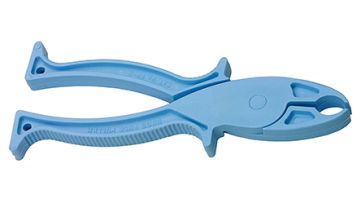
Depending on the type, fuses can be small and delicate, meaning that removing them without causing breakage or damage to neighbouring fuses can be a challenge. Many cars come with a fuse puller, a handy device designed to make the process of removing automotive fuses much easier. Before attempting to remove a fuse, locate the fuse puller – if the vehicle has one – as this will help you remove the affected fuse quickly and cleanly. If your vehicle does not have a fuse puller, you can buy one to perform the task effectively.
Shop Fuse PullersCar Fuse Types
Automotive fuse types are typically characterised by their size and amperage rating. As explained above, different types and styles of fuses require different ratings. It is essential to only choose the correct rated fuse to ensure strong performance and avoid causing any further issues with the electricals or the circuit.
There are several different ways to identify the amperage rating of any given blade fuse. The most straightforward is to inspect the fuse itself, where the amperage rating is typically noted on or near the top of the fuse. The second is to check the fuse diagram in the vehicle, to understand which fuse type is in each slot. The last method is to identify the fuse type and amperage rating using the fuse colour coding chart.
Different sizes and colours denote different characteristics of a particular fuse. It is also worth noting that not all sizes are designed to work with all available amperage ratings. DIN 72581 is the current standard used for measuring automotive blade fuse types.
The following chart outlines the blade fuse colour coding system and the corresponding amperage rating:
| Colour | Current Rating |
| Black | 1A |
| Grey | 2A |
| Violet | 3A |
| Pink | 4A |
| Tan | 5A |
| Brown | 7.5A |
| Red | 10A |
| Blue | 15A |
| Yellow | 20A |
| Clear | 25A |
| Green | 30A |
| Orange | 40A |
| Red | 50A |
| Blue | 60A |
| Tan | 70A |
| Clear | 80A |
Browse some of the most common current rating options below:
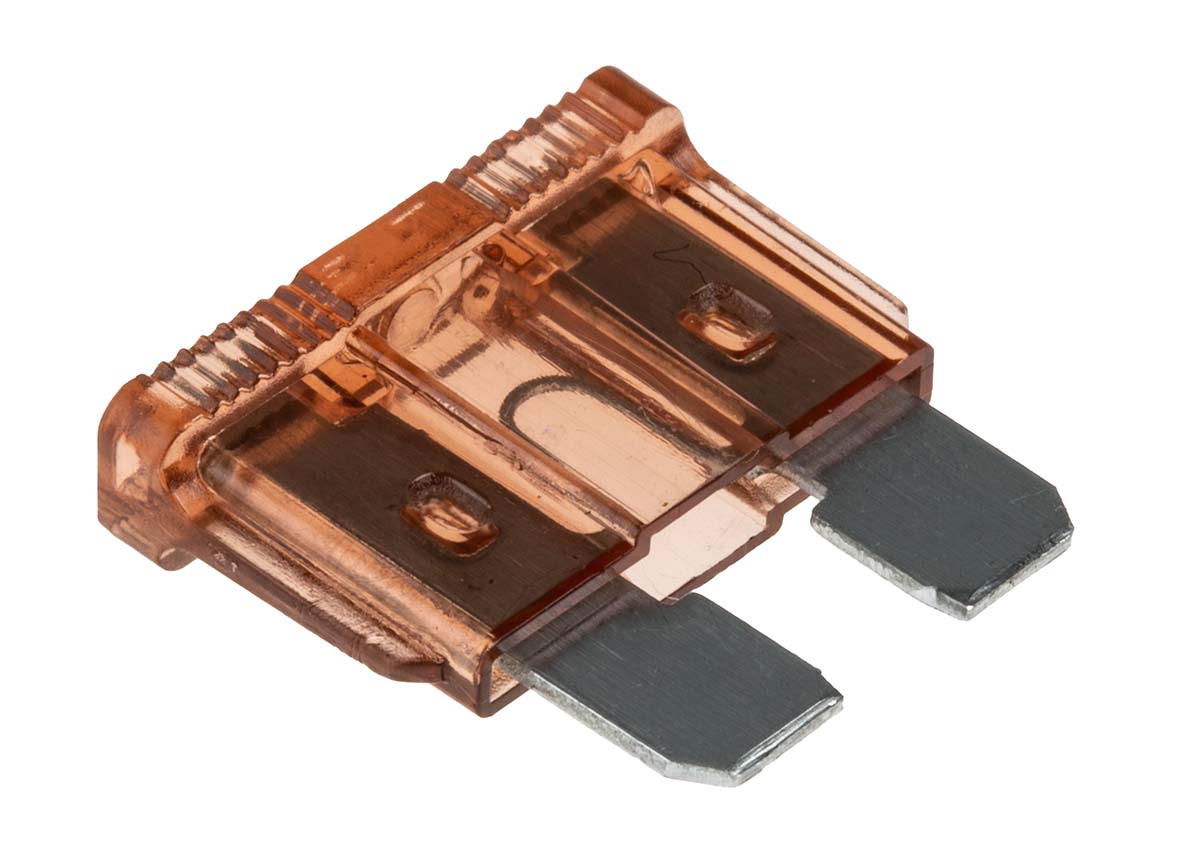
7.5A Car Fuses
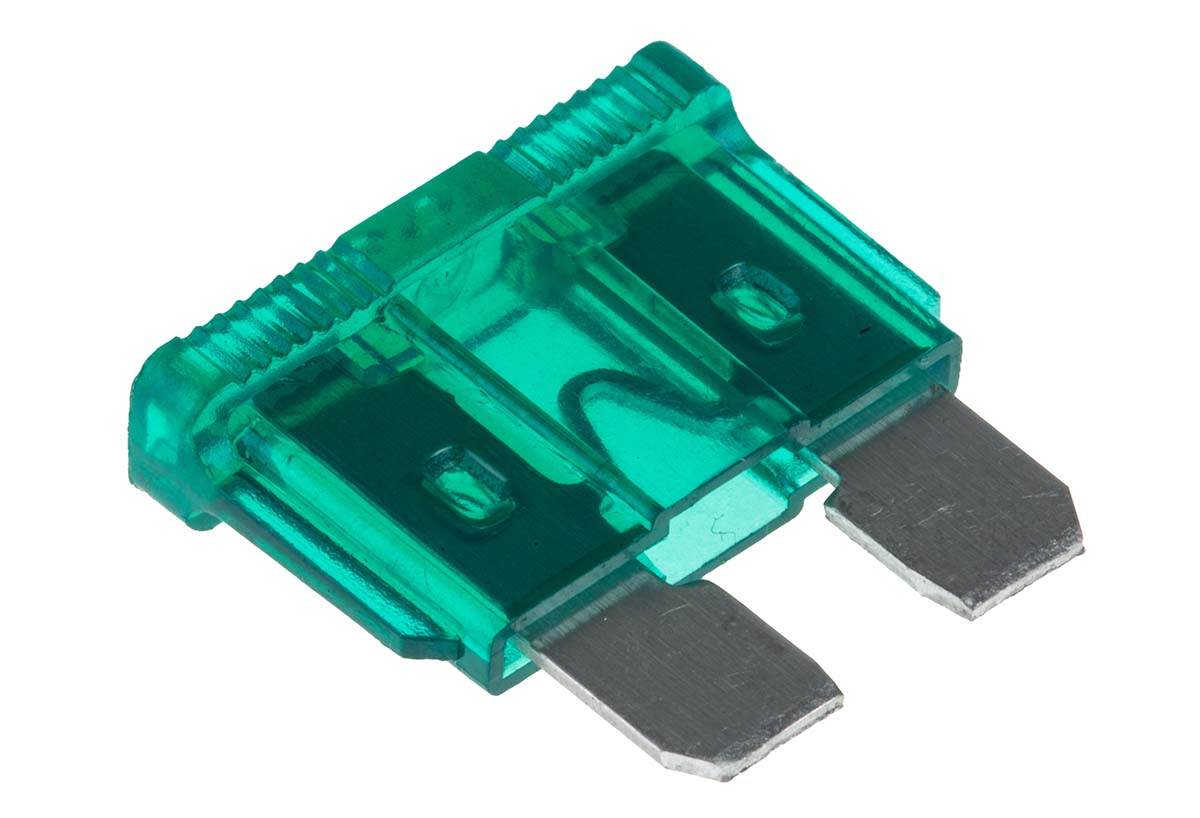
30A Car Fuses
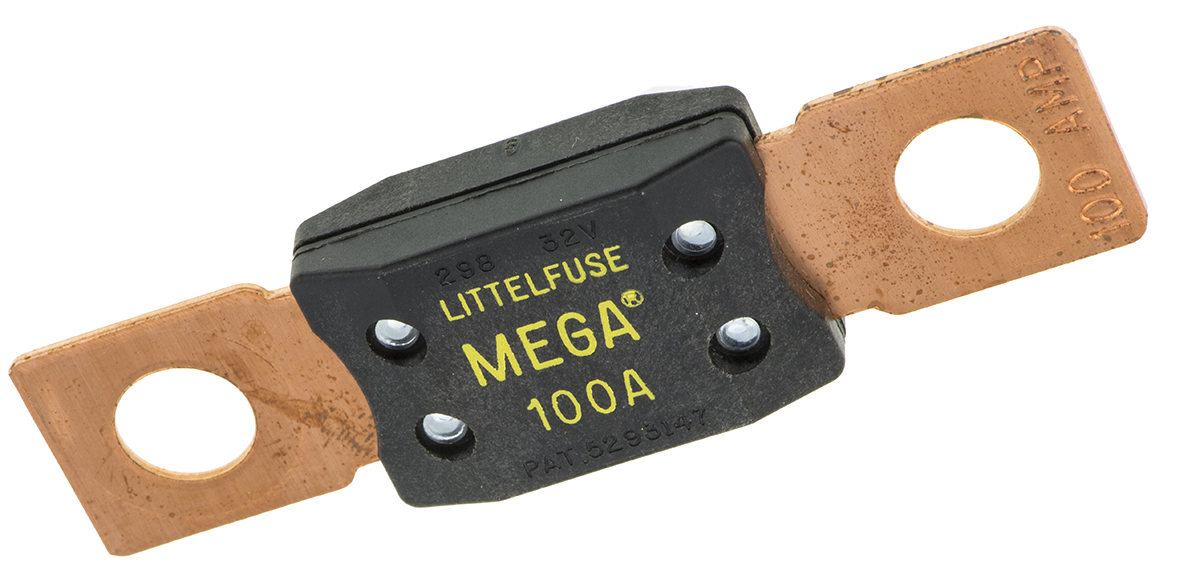
100A Car Fuses
Car Fuse Sizes
There are six primary types of automotive blade fuse available. These are:
-
Micro2 – these are the smallest type, characterised by their tall, thin shape
-
Micro3 – these are easily identifiable as they are the only type with three terminals instead of two
-
Low-profile mini – these are small and compact. The terminals do not extend far beyond the main fuse body
-
Mini - these feature the same body design as low-profile mini fuses but the key difference is that the terminals are much longer than with the low-profile mini
-
Regular - these are the standard versions and are also the second-largest type
-
Maxi – these are the largest size available and are designed for high current applications
This automotive fuse types chart displays the different types and car fuse sizes that are available:
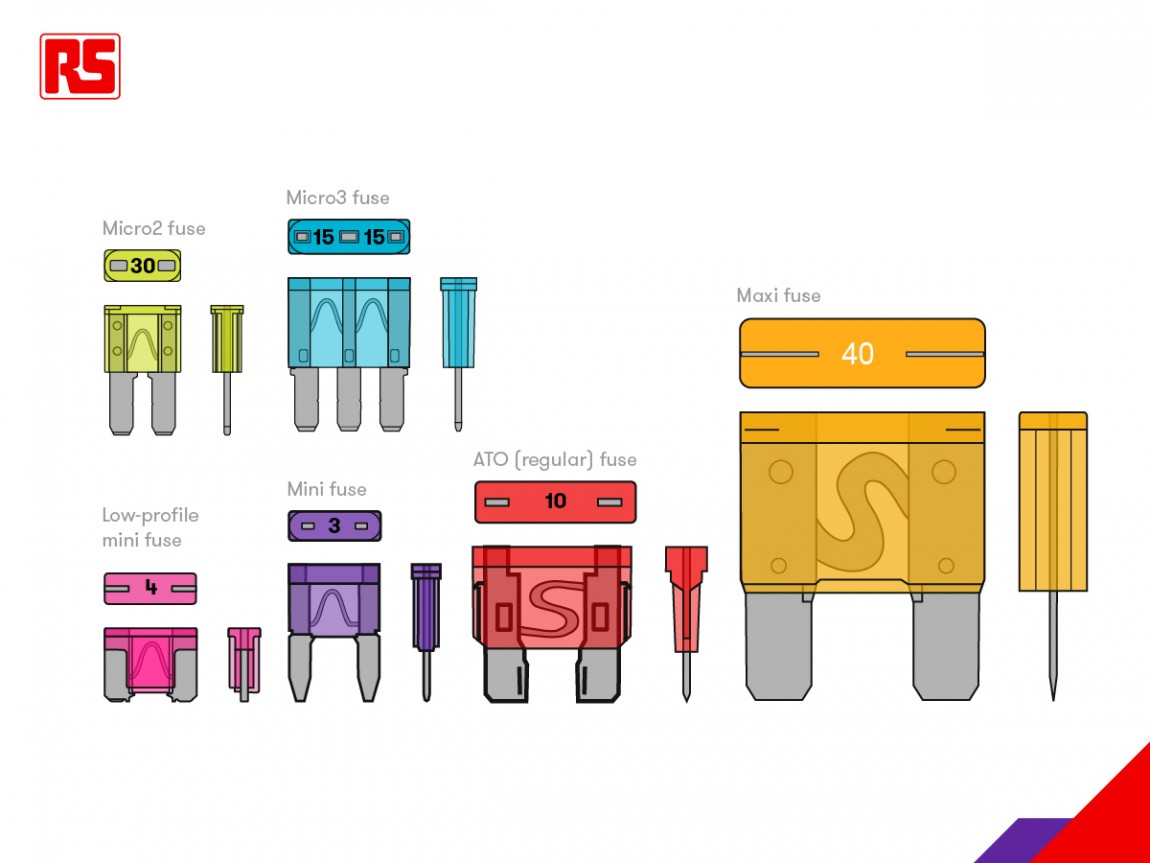
FAQs
Why Do Car Fuses Blow?
Car fuses are designed to blow to protect electrical equipment in the event of overcurrent or short-circuiting. It is normal for fuses to blow but once a fuse has blown, it will need replacing as automotive fuses are single-use. If fuses in the same location are regularly blowing, further investigation may be required to determine the underlying cause for this action.
How to Change Fuse in a Car Cigarette Lighter?
A vehicle’s cigarette lighter could stop working for any one of multiple reasons, but one simple solution is to check the fuse and change it if required. The following steps outline how to do this:
-
Locate the fuse for the cigarette lighter
-
Visually inspect the fuse for any obvious signs of damage and to see if the fuse has blown
-
If the visual inspection is inconclusive, use a multimeter to test whether the fuse is working or not
-
If the fuse is working correctly, this means the problem does not lie with the fuse. If the fuse has blown or is not working correctly, it will need to be replaced
-
Purchase a new fuse of the same type, size, and current rating
-
Carefully remove the old fuse from the housing and slot the new fuse in its place
-
Once installed, test the cigarette lighter to assess if functionality has returned
How to Fix a Car Radio Fuse?
If your car radio has stopped working, a blown fuse may be the cause. These steps will help you identify and replace a broken car radio fuse:
-
Identify the fuse panel and consult the fuse diagram to understand which fuse needs to be examined
-
Use a fuse puller to remove the fuse and visually inspect it for any signs that it has blown
-
If the fuse has blown, you must replace it with another fuse of the same size and current rating
-
Gently slot the new fuse into position in the fuse panel, taking care not to damage it or any surrounding fuses
-
Replace the panel cover and test the vehicle’s radio to see whether the problem has been resolved
-
If the radio is still not functioning as expected, further investigations will be required to identify the root cause of the problem
Related Guides
Screwdrivers Guide
This guide explains everything you need to know about screwdrivers and the different types available.
Battery Tester Guide
Our guide will help you understand what battery testers are, the different types, their uses and how they work.
Crocodile Clip Guide
What are the different types of crocodile clip? Discover their uses and the types available in our guide.
Multimeters Guide
Not sure how to use a digital multimeter? Our guide also shows you how to read a multimeter and shares key products.
